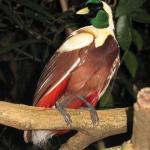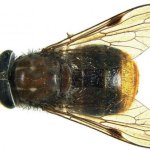 So that scientific research on animals can be communicated confidently, it is important to ensure that the naming of species is stable and universal. For animal species, the International Commission on Zoological Nomenclature (ICZN) acts as an advisory body for the zoological community by ensuring the correct use of animal species names. As such, they are responsible for maintaining the International Code of Zoological Nomenclature– which states requirements for new species names.
So that scientific research on animals can be communicated confidently, it is important to ensure that the naming of species is stable and universal. For animal species, the International Commission on Zoological Nomenclature (ICZN) acts as an advisory body for the zoological community by ensuring the correct use of animal species names. As such, they are responsible for maintaining the International Code of Zoological Nomenclature– which states requirements for new species names.

In a recent BioMed Central blog post the new amendment to ‘the code’ which now legitimizes online-only publication of new species names, providing the publication is registered with ZooBank, the Official Register of Animal Names, was discussed. This enables much easier publication of species names in open access online only publications, without the need to produce print issues. Researchers can therefore publish in journals such as Frontiers in Zoology and BMC Evolutionary Biology and ensure that their work is widely accessible – thus broadening the reach of their results.
However, many researchers in this area do not believe that this change is extensive enough. In a commentary published in Frontiers in Zoology today, Alessandro Minelli, a member (and former president) of the ICZN, discusses the progress made so far in the changes to ‘the code’. He also outlines further requirements needed to ensure that nomenclature can be brought up to date and provide researchers with a service which is in line with available technology and digital advances. The idea proposed is that nomenclature could move towards a widely accessible repository of names and the accompanying formal description, such that the action of registration would confer the availability of a new name in the same way that publication does currently. Minelli explains further ‘I regard ZooBank as the prototype of a comprehensive Website of Zoological Nomenclature through which we will eventually exploit the facilities of modern technology to improve the stability and universality of the scientific names of animals’.

In short, this is the first step towards establishing a technology-based scientific inventory for zoological nomenclature, that is necessary to facilitate further advances in this field. As Minelli concludes, the responsibility now rests with the scientific community to ‘help this old body steering the boat of nomenclature towards more ambitious but necessary targets, in pace with the spirit, the technology, and the needs of science in early twenty-first century’.
Rhiannon Meaden
Journal Development Editor, Frontiers in Zoology
Latest posts by Rhiannon Meaden (see all)
- Guinea pig teenagers are highly domesticated - 9th April 2014
- Goats, the boffins of the farmyard - 26th March 2014
- Developments in Daphnia - 25th March 2014
Comments